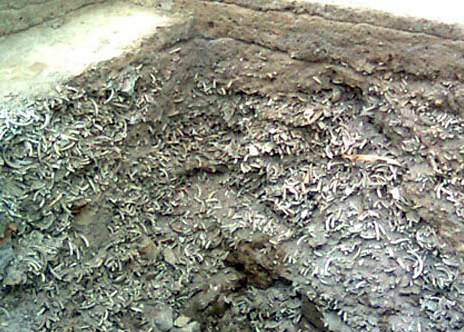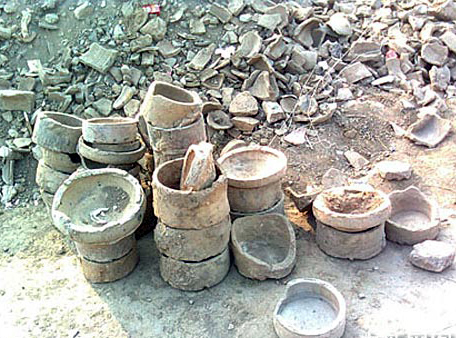The Best-preserved Kiln (So Far) was Unearthed at Ding Kiln Sites in Hebei Province
The third scientific excavation of Ding Kiln sites since the establishment of the People's Republic of China was started by the Joint Archaeological Team of Ding Kiln Sites in Quyang consisting of the Hebei Provincial Institute of Cultural Relics and the School of Archaeology and Museology, Beijing University on 20th September, 2009. The team opened up three areas at Beizhen Village, Jianci Hill and the west of Jianci. Twelve grids and totally 500 km² areas were uncovered since the project began. It yielded so far the best-preserved Ding Kiln furnace and the earliest bowl with inscription Shangshi ju, and the remains verifying the argument that Ding Kiln was originated in Tang Dynasty.

Presently some pits have already been finished, and deeper ones are 3 or 4 m in depth. They produced numerous porcelain fragments of early North Song to Jin Dynasties, such as fragments with inscription Shangyao ju, Shangshi ju, Donggong, etc. At least four kiln sites and one important workshop site were found. One of the kilns is 9.7 m long and well preserved. The furnace, about 2 m deep, was built with regular bricks and appears to be very economical and durable. It is so far the best-preserved one in Ding kilns.

On 24th October one exquisite porcelain female figurine was discovered in grid 4 of Area C in Jianci, which remains only the head with highly upcoiled black hair, fresh and fair cheeks, small black eyes and cherry lips. She looks exactly like those portrayed by Zhou Fang (Tang Dynasty) in his painting Zanhua Shinü Tu. Judging from the stratum it located in, the figurine could be the handicraft of Five Dynasties period.

Furthermore, archaeologists also found some kiln furniture such as saggers and ringed-support, but porcelain fragments there are relatively in small number, which suggests a high yield rate of Ding Kiln.
The excavation has uncovered the producing workshop of the finest Ding Kiln wares and complete cultural strata of the early North Song period. (Translated by Tong Tao)

